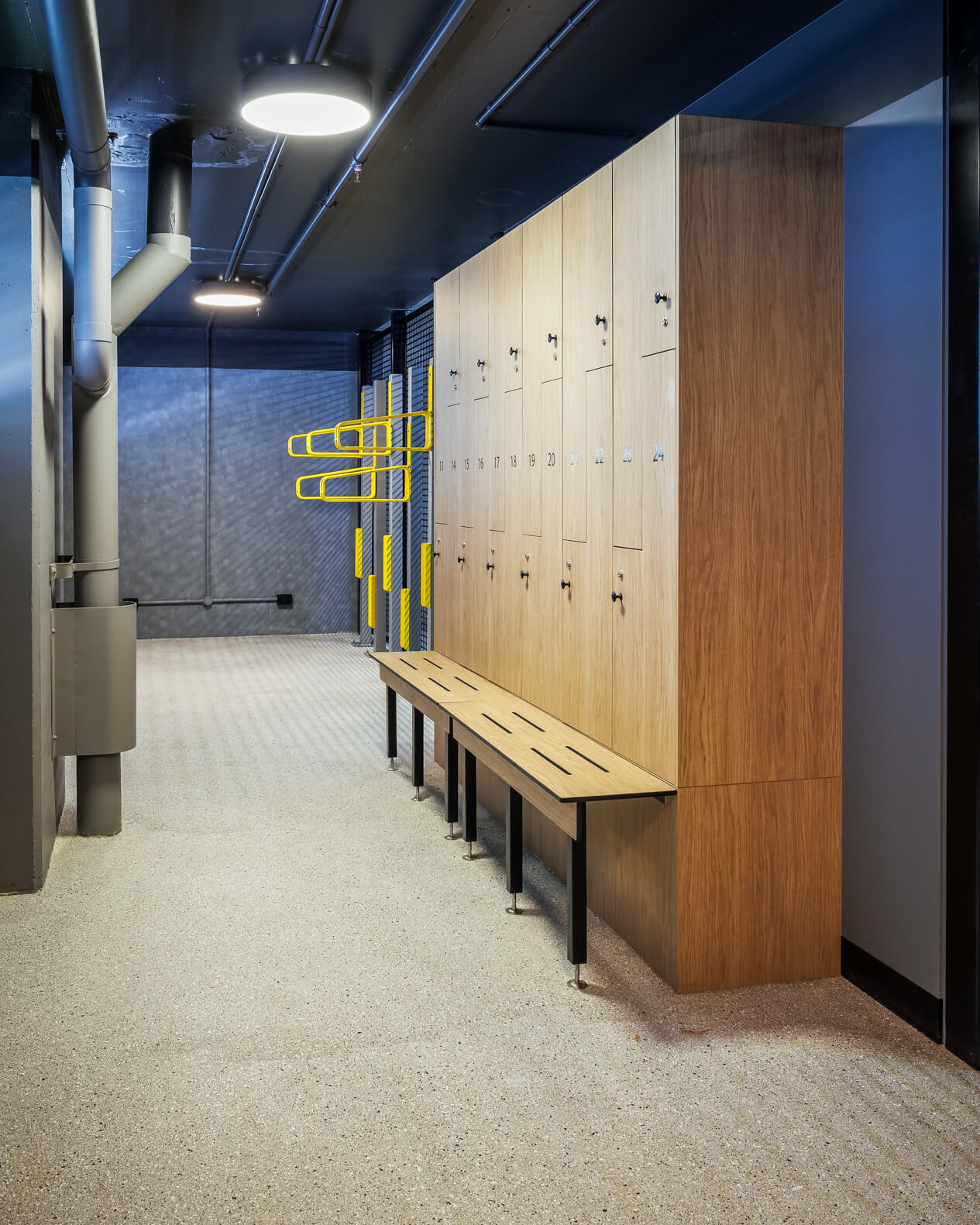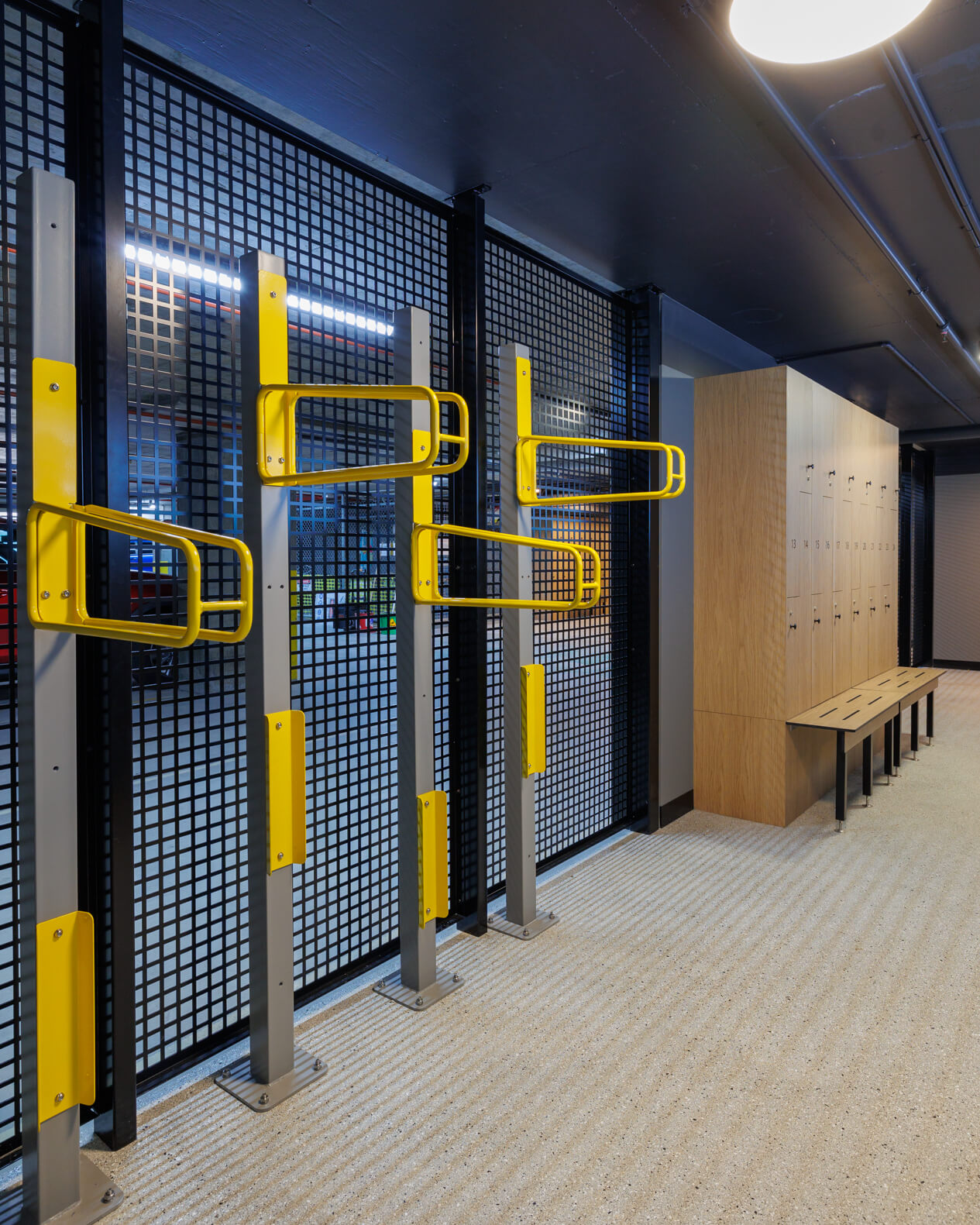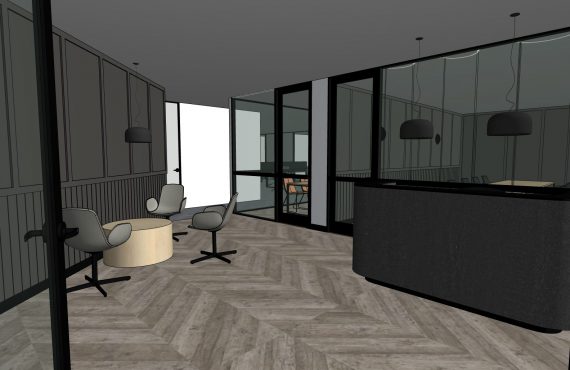Creating a welcoming and functional space to boost active travel in your office or commercial building can be an attractive addition for prospective tenants.
Installing end-of-trip facilities used to be viewed as a luxury but is now a requirement under the Queensland Development Code for all new major developments and those undergoing significant renovations. They are also an important value-add for property owners in a competitive market for tenants.
These amenities can be a challenge to design but, done right, can be a space that serves as a significant drawcard for potential tenants and a highlight for their employees.
What are end-of-trip facilities?
End-of-trip facilities are designed to support employees who actively travel to work, ride a bike, walk or jog, and exercise during their lunch break.
They are typically housed in a building basement, including facilities for people to park bikes, secure equipment, shower, and change.
End-of-trip facilities are becoming an increasingly important addition for tenants in recognition that they can increase staff wellbeing and promote healthier lifestyles, as well as reduce demand for car parking.
Well-designed and welcoming end-of-trip facilities can also help to boost a company’s image and are often a selling point for organisations looking to attract and retain staff.
Why are end-of-trip facilities important?
End-of-trip facilities are a mandated requirement for all new major developments and major renovations to major developments in designated Queensland local government areas.
A new major development (commercial office building, shopping centre etc.) with a floor area greater than 2000m2 must include end-of-trip facilities that are easily accessible and located within the building or on-site within 100m of a main entrance.
Similarly, a major addition to a development that increases the floor area by 1000m2 must also provide end-of-trip facilities.
These amenities are also important for buildings seeking to improve their sustainability ratings.
Under the Green Building Council Australia’s Green Star buildings rating system, credits are awarded to buildings that facilitate a reduction in private car dependency.
Specifically, buildings can be awarded credits towards their Green Star rating if they have installed active transport facilities like secure bike parking, showers, changing amenities and lockers.
These facilities must be deemed “appropriate to encourage their use over that of private vehicle use”.
What should be included in an end-of-trip facility?
End-of-trip facilities must be designed to support those who bike, walk to work, or exercise during lunch.
Accordingly, they must be easy to access and include facilities such as:
- bicycle storage
- showers
- toilets
- changing areas
- lockers
- ironing stations
- bench seating, and
- access areas for circulation.
Wheelchair and ambulant-accessible toilets and showers are also a mandated requirement for new facilities, so they must be included whether you are building new or updating an end-of-trip facility.
Privacy and security are important factors to consider, along with the provision of drinking water.
Some facilities also include bicycle repair equipment such as foot pumps and tyre repair kits and courtesy equipment like hair dryers, irons and ironing boards, clothing hooks and mirrors.

What are the challenges in building end-of-trip facilities?
End-of-trip facilities are frequently located in the basements of buildings to allow ease of access.
This can present design challenges along with tricky approvals processes involving town planning, certification, and hydraulic and services designs.
Wheelchairs and accessible toilet and shower facilities also require careful planning and coordination to ensure they are compliant.
Further, should a building owner want to seek a Green Star rating of the facilities, the design needs to consider the specific assessment requirements.
Other design challenges when building end-of-trip facilities can include ensuring access is safe, convenient and appropriately signed.
As these facilities are often co-located with car parks, it’s crucial to ensure there is no hazard to pedestrians or interference with emergency access or loading bays.
Access routes must also ensure sufficient clearance for mounted bicycle riders and avoid steep ramps, drainage grates and other potential hazards.
Appropriate levels of surveillance and lighting are also important for security.
What are the best examples of end-of-trip facilities?
End-of-trip facilities can be an attractive addition for prospective tenants, especially when well-designed and outfitted.
Some of the best examples of end-of-trip facilities include:
- Dedicated towel services
- Vending machine for emergency bicycle repair parts
- A variety of bicycle storage facilities, including high rails and on-ground hoops
- Valet laundry services
- On-site bicycle repairs
- Electronic lockers
- Bathroom and grooming products
- Charging stations for electric bikes.
RAW Commercial Projects have designed and delivered a number of end-of-trip facilities, including 301 Coronation Drive, Fortitude Valley end-of-trip facilities, Rivergate Marina and 444 Logan Road.
Find out how our design and construct process can provide a seamless experience for planning and creating your end-of-trip facilities.















